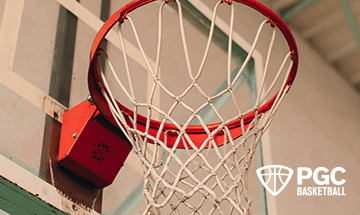How Did Brett Comer Play-Make FGCU to the Sweet 16?
Florida Gulf Coast was the Cinderella story of this year’s tournament as it steam rolled through the first weekend as a 15 seed. They not only won more games than any other 15 seed in tournament history but won in a fashion that was anti-Cinderella. The amazing thing about this run was that instead of slowing down the pace, like Princeton against UCLA or Valpo against Ole Miss, they actually sped the game up.
This was a one of a kind run by a team out of the Atlantic Sun, one of the worst conferences in the country (ranked 26 out of 32 in the nation). You were captivated by their three′s and high flying dunks and probably heard the “Dunk City” remix that was all over the YouTube by Monday. They created two of the most entertaining games in tournament history, not because they won but because of how they won. Anyone who has ever watched the first weekend was scratching their head saying, “They are winning by how much?” They even gave us an ounce or two of belief that they could beat in state power Florida and possibly pull off the ultimate upset, making the Final Four.
The craziest part of all was that the guy most responsible for this run wasn’t their self-made millionaire coach, one of their high flyers, three point shooters, or even their best all-around player. The guy who made this run happen in fact did not hit a three or have a dunk in any of their three tournament games. That guy was FGCU point guard Brett Comer.
Comer was the conductor of the face moving train that was the FGCU offense. He orchestrated two masterpiece games as a play maker that should be emulated by young point guards everywhere. His ability to create plays in all situations was THE difference for Florida Gulf Coast. Comer creates in four primary ways as a point guard and when he is at his best, like he was the first weekend, all four are clicking on all cylinders.
The foundation of his play making is his ability to stay in control. At the end of drives into the paint when there is nothing readily available Comer comes to a stop on two feet and uses pivots to survey the court and create more time for openings to appear. Average point guards will take off one foot and get into the air without a plan but in these two games he rarely left the floor without a plan. Like Steve Nash, Comer loves to keep his dribble alive in situations where most would pick it up. This allows him to scan the court and maintain the ability to attack different angles or create new opportunities quickly
A few things you will notice Comer doing in this control video are using fakes when he stops and pivoting away from pressure to find open players behind his drive. The use of fakes is vital for Comer because it keeps the defense off balance and makes him more unpredictable. Having patience on his stops to not just quickly pass to the first available target allows him to give the defense time to fall asleep, which in turn can free up cutters for dunks and threes. In all of these situations you will notice he stays powerful and scans the court. Great point guards deceive you with their eyes, Comer is a prime example. An added bonus of creating the habit of playing powerfully on two feet with control is that it allows you to take on pressure and traps and bust it for easy scores like he does on the last clip.
The second way we see Comer create opportunities for his FGCU teammates was in transition. He loves getting the ball in the open floor (off misses and makes) to put immediate pressure on a defense that is not set. Comer always races the ball from arc to arc as all great point guards know nothing good happens between three point lines. His mind set is to hunt the paint in transition to look for layups first which puts maximum pressure on the D. Something you will notice is that he always stays in the middle third of the court, as this is the most dangerous place he can be (allows him to pass to both wings and corners, hit rim runners, and still be able to attack off the bounce to either side of the floor). His most basic read is to see if the defense has collapsed to the paint, which will open up his shooters, or if they have remained spaced outside the paint, which will free his teammates in the middle of the court for easy dunks and layups.
Something else to look for in this breakdown is how he uses his eyes. Comer has “Chess Game Vision,” he always knows where his 9 pieces are and this gives him the ability to think 2 or 3 moves ahead. Watch how he is constantly scanning the court by keeping his head on a swivel. He also creates contact with defenders in the middle third to make sure he isn’t cut off early. You will see him initiate this contact early to keep the defense on his back and side. Coaches want a PG that can “KYP,” which stands for “Know Your Personnel.” Comer understands who can catch the lob, who wants a bounce pass to finish, and where his shooters like the ball.
The last thing you see in the transition clips is the way he dissects teams that give him a numbered advantage break either after a turnover or when FGCU beats pressure. Great PG’s “Spoon Feed” teammates in these situations. Comer uses “face high passes” to make life easy for a finisher, lob passes for his jumpers, and is always deceiving the defense with his eyes. The difference between a great PG in transition and an average one is sometimes 1 foot on a pass. Timing and precision is everything in transition and Comer understands how to execute these fundamentals.
The third way Comer creates for teammates is through simple vision plays in the half court. He always anticipates when a teammate will have an advantage and has the ability to make passes from all angles with both hands to deliver the ball on time and on target.
You see a lot of simple passes with exact timing in these clips. Comer understands the difference between an open shot in rhythm and a contested one can be a half second. His ability to see cutters all the way to the end is also an untaught skill. He also has a supreme knowledge of the teams offense, set plays and out of bounds plays that allows him to know what cutters and options will be free before they come open.
The fourth piece of his play making, and the one that ended up failing him in the Sweet 16 game against Florida, is his ability to create in the half court. Florida Gulf Coast uses Comer in ball a lot of ball screens and he occasionally will look to break down his defender 1 v 1 to draw defenders. He looks to engage 2 defenders in these two situations and read the defensive rotations to see if he has a shooter free or a big man open. Comer is excellent at understanding what kind of pass is going to get to the roll man in ball screen situations depending on the situation. Much like transition Comer leans on his ability to get to the paint to constantly create havoc for the defense.
These clips are great examples of Comer constantly beating one defender and engaging the attention of a second or even third defender. He also is tremendous at maintaining vision of the entire floor to not just limit himself to creating for players on one side of the court. Lastly, his use of the baseline drive can be debilitating for defenses as you must rotate defensively and then close out to shooters on the kick out.
With the good comes the bad though. While the first two games were Comer at his best the third was Comer at his worst. As a point guard that creates in the ways he does it is easy to get into trouble. The biggest thing that can cause him to have bad games are when teams make him score in 1 v 1 situations as opposed to rotating hard off bigs and shooters to stop him. If you stay home on shooters and the roll man Comer has a tendency to force lob passes that aren’t there and sometimes doesn’t play with control.
In this video you see Comer playing without the control that we said is the foundation of his game when he is at his best. He sometimes gets caught in the air taking off one foot with no plan which makes him turnover prone. The ability to only take off one foot if you are 100% sure of your read is rare. The good Comer is great at making this distinction and stops in control when he is not 100%.
FGCU went as Comer went this year and the final game was the ultimate example. When his assist/TO ratio was above 2 to 1 you could be assured Gulf Coast would be at it’s best. In the first two tournament wins Comer averaged 12 assists and 2.5 TO and in their loss to Florida he had 7 assists and 9 TO. Looking at the season it was fairly predictable that if Comer had a bad TO game FGCU would struggle. In their losses this year Comer had a 1.3/1 assist to turnover ratio while in their wins he had a 2.2/1 assist to turnover.
At his best he gave us “Dunk City” and a run we will never forget. For Comer, he now needs to become a more dangerous scorer. His ability to read the game and create for teammates is uncanny but with the right scout and preparation his inability to score makes it easy to take this away. His growth and success the next three years will hinge on his ability to add a dangerous jump shot and figure out a way to score off his own penetration more consistently. But no matter where he goes we will always have this.
Related Articles
PGC Releases 2024 Summer Basketball Camp Schedule & Locations
Every summer, tens of thousands of players across North America get the privilege to attend a basketball camp to improve their skills and have fun…
Two Youth Basketball Organizations from the Jr. Nba’s Flagship Network Partner up to ‘teach the Game the Way It’s Meant to Be Played’
For the first time in history, two best-in class youth basketball organizations and members of the Jr. NBA Flagship Network – PGC Basketball and Pro Skills Basketball – have entered into an official partnership.
About PGC
PGC Basketball provides intense, no-nonsense basketball training for players and coaches. Our basketball camps are designed to teach players of all positions to play smart basketball, be coaches on the court, and be leaders in practices, games and in everyday life.
We combine our unique PGC culture with a variety of teaching methods and learning environments to maximize the learning potential of those that attend our sessions. In addition to spending 6-7 hours on the court each day, lessons will be reinforced through classroom sessions and video analysis.
Our goal at PGC is to empower you with the tools to fulfill your basketball dreams, while also assisting you in experiencing the joy of the journey.
To learn more about PGC Basketball, including additional basketball training tips and videos, visit our YouTube Channel or find us on Facebook, Instagram, and Twitter.












Share This Post